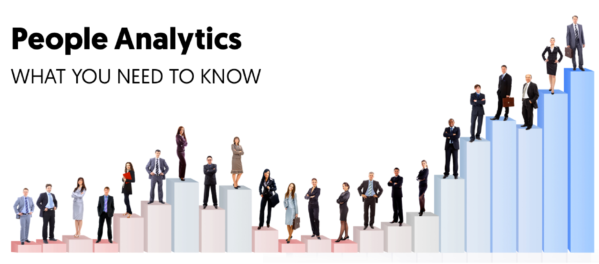David Green sits down with Dialogue’s Kirsten Levermore in advance of the People Analytics Forum 2017 to discuss why data analytics is the next step in HR, and how you can join the revolution
People Analytics is central to the future of Human Resources – at least, that’s what a clutch of the most prestigious publications, peers, award bodies and industry analysts declare. And at the forefront of those bringing HR into the future are people like David Green, Global Director of IBM’s People Analytics Solutions and one of the world’s most respected voices in HR.
“I started off as a recruiter off back in the 1990s,” Green tells Dialogue. “I went on to design recruiting processes for a number of global companies. Then, complete twist of fate, I spent six years in France working in a tech company. The company harnessed the data it collected to provide insights, services and new products to its customers. Returning to the UK in 2011, I hoped to see similar techniques being applied by HR to employee data.
“It was the right time,” he muses. “The interest in data analytics and algorithms and the opportunity it offers to HR and businesses was beginning to grow.”
Analytics, specifically ‘people analytics’, as it’s called when applied to employees and management, now sits at the core of Green’s work with IBM, “helping enable HR leaders to provide a bigger and better impact on the business whilst in parallel improve the experience and wellbeing of employees.”
When asked what motivates him, Green nods to a quote from Virgin founder, Sir Richard Branson:
A business is simply an idea to make other people’s lives better.
“There’s a lot of exploitation in companies,” Green elaborates. “I believe people analytics can help to expose that, demonstrate that it is bad for business and consequently help to make people’s lives better at work. I want to shine a light on the good work people analytics practitioners are doing, and help raise the profile of evidence based HR.”
Three groups of people who will benefit most from people analytics
Benefits to business:- Better business outcomes. Learning from the application of data analytics in Marketing: the insights companies are able to get about customers and their preferences, motivation and values, helps them personalise the consumer experience and ultimately improve revenues. Similar approaches can be applied to people data. In Recruitment, for example, analytics can be used to find the best talent identify and predict high performers in your candidate pipeline. Analytics can also be used to predict which employees are likely to leave your organisation and what you need to do to retain them. It can also be to help businesses identify the drivers of employee engagement that have the biggest impact on customer loyalty, revenue and profitability.
- Workforce Planning. Analytics in conjunction with strategic workforce planning can give businesses visibility of employee skills and capabilities, and their aptitude to learn new skills and capabilities. This helps organisations evaluate if they have the talent with the skills and capabilities they need to execute the business strategy, where they can grow talent and where they need to hire externally.
- People analytics can be used to improve employee experience. This could start at the on-boarding stage, where companies could personalise on-boarding, and make it as relevant as possible. I already know of several projects that examines data from frequently asked questions from new starters, and can pre-emptively push out answers in response to questions typically asked on a certain day – so, if on day eight of a new job, new recruits typically ask about pensions, information on pensions is sent to their email on the morning of day eight, before they even ask for it.
- Analytics can be used to help identify burnout. Through an analysis of how employees work and communicate, companies can mitigate or even prevent burnout and severe exhaustion in their teams.
- People analytics can be used to personalise training and mentorship programmes. This is a cool one, and something we’re already doing for IBM employees who opt in. Essentially, IBM uses analytics to recommend relevant training courses and internal job opportunities to the employees based on their skills and capabilities as well as their career goals. It’s the 21st century version of a “tap on the shoulder”! Not only does this help employees progress their careers, but it also has helped IBM increase retention, reduce hiring costs and improve time to productivity. These are benefits I’ve seen across other organisations that have introduced similar programs.
- Increasing the impact of HR and improving its perception in the business. HR has not traditionally had a great reputation within the business for providing accurate and useful data, but the insights that analytics offers can change the game, and change the dynamic of the conversations at every level. One great, recent example of this was when a very big tech firm had huge plans to grow, with thousands of employees being recruited to a new site in China. The head of People Analytics pulled together a report, looking at supply and demand of talent in the site’s nearest city. They found that supply was low, and demand was high – meaning little chance of the company luring and retaining the quality and quantity of people it required. Identifying this, the head of People Analytics also researched two alternative cities on the list provided by the facilities department – and one of them suited the company’s needs perfectly. Taking these reports – this data – to the table where decisions were being made meant that HR could change the dynamic of the conversation and have a real impact. In this case, they also saved the company tens of millions of dollars.
Some real projects and technology in people analytics include:
- A very practical example – attrition (the loss of employees over time) is a big challenge in most organisations. Normally, HR would look for ‘spikes’ i.e. for patterns of leaving, teams that are being eroded and so on. In IBM, we took this a step further, using analytics to identify patterns of attrition to identify proactively which employee populations to invest in to mitigate flight risk – a win-win for IBM and for our employees. The program, called Proactive Retention has significantly helped reduce attrition and resulted in hundreds of millions of dollars savings since its inception.
- Another great project dealing with attrition was created by Nielsen, who worked out that every one point of attrition was worth $5 million to the company.Looking at a number of variables, they realised that internal mobility was a huge factor in attrition, and thus developed their ‘Ready to Rotate’ programme, allowing employees to flag their profiles when they felt ‘ready’ to move onto a new position or challenge. Within six months of ‘Ready to Rotate’ being implemented, Nielsen reduced their attrition rate to zero.
- Humanyze,which is one of the more interesting people analytics tech companies around, has created digital badges that analyse how, when and where employees and teams are collaborating effectively. One example, which you can read on re:Work with Google, looked at how employee interactions at lunchtime can affect their productivity – it turns out, in this example, that larger lunch tables and overlapping lunch breaks can increase productivity by more than 10%. All of this data ultimately is about knowing what makes people more or less productive, and motivating HR’s actions with concrete deliverables for all.
You and your business can prepare for analytics in HR
- The challenge of change. The change management process of integrating people analytics into the core framework of the HR function is going to be a big challenge for most organisations. For those who want to develop the necessary skills to work with analytics, there are some great free online courses, plenty of case studies to be inspired by and an increasing amount of good literature. There are also platforms and environments such as the People Analytics 2017 Forum, with friendly, informative atmospheres where you can learn more and get involved in the changes and growth, as it happens.
- HR’s bad reputation and credibility. This will likely require a mindset shift throughout both the company and HR teams – which will hopefully occur as HR’s capability develops, with analytics integration and more useful, impactful contributions to conversations.


